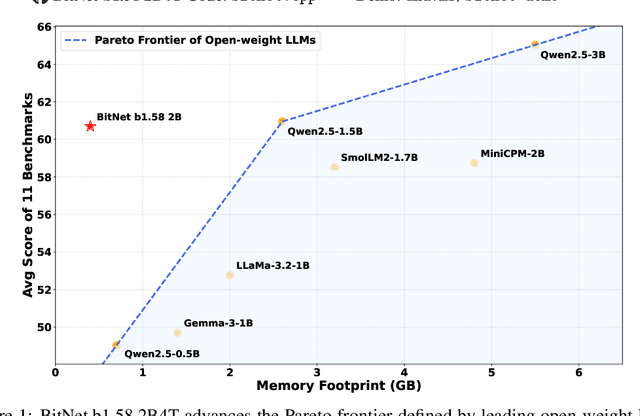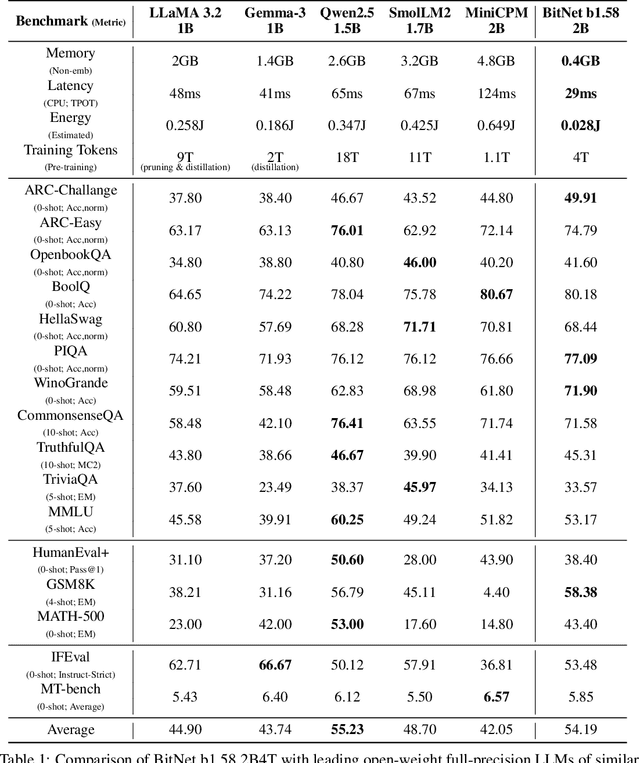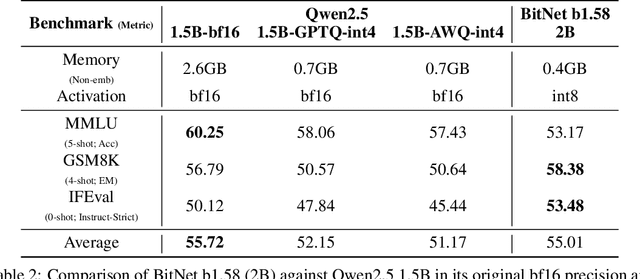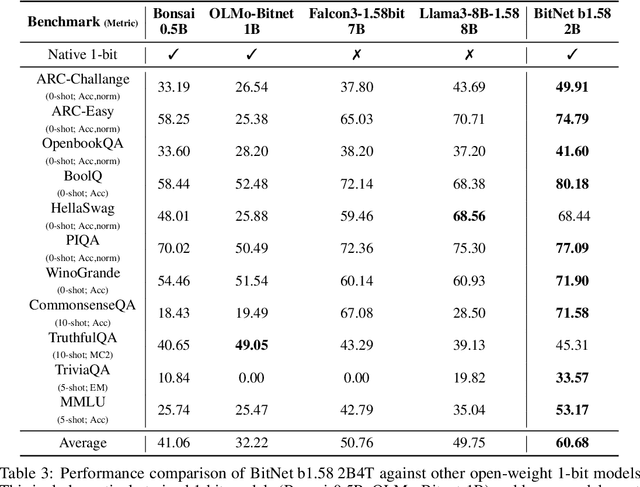Yan Xia
11Plus-Bench: Demystifying Multimodal LLM Spatial Reasoning with Cognitive-Inspired Analysis
Aug 27, 2025Abstract:For human cognitive process, spatial reasoning and perception are closely entangled, yet the nature of this interplay remains underexplored in the evaluation of multimodal large language models (MLLMs). While recent MLLM advancements show impressive performance on reasoning, their capacity for human-like spatial cognition remains an open question. In this work, we introduce a systematic evaluation framework to assess the spatial reasoning abilities of state-of-the-art MLLMs relative to human performance. Central to our work is 11Plus-Bench, a high-quality benchmark derived from realistic standardized spatial aptitude tests. 11Plus-Bench also features fine-grained expert annotations of both perceptual complexity and reasoning process, enabling detailed instance-level analysis of model behavior. Through extensive experiments across 14 MLLMs and human evaluation, we find that current MLLMs exhibit early signs of spatial cognition. Despite a large performance gap compared to humans, MLLMs' cognitive profiles resemble those of humans in that cognitive effort correlates strongly with reasoning-related complexity. However, instance-level performance in MLLMs remains largely random, whereas human correctness is highly predictable and shaped by abstract pattern complexity. These findings highlight both emerging capabilities and limitations in current MLLMs' spatial reasoning capabilities and provide actionable insights for advancing model design.
VibeVoice Technical Report
Aug 26, 2025Abstract:This report presents VibeVoice, a novel model designed to synthesize long-form speech with multiple speakers by employing next-token diffusion, which is a unified method for modeling continuous data by autoregressively generating latent vectors via diffusion. To enable this, we introduce a novel continuous speech tokenizer that, when compared to the popular Encodec model, improves data compression by 80 times while maintaining comparable performance. The tokenizer effectively preserves audio fidelity while significantly boosting computational efficiency for processing long sequences. Thus, VibeVoice can synthesize long-form speech for up to 90 minutes (in a 64K context window length) with a maximum of 4 speakers, capturing the authentic conversational ``vibe'' and surpassing open-source and proprietary dialogue models.
Vela: Scalable Embeddings with Voice Large Language Models for Multimodal Retrieval
Jun 17, 2025Abstract:Multimodal large language models (MLLMs) have seen substantial progress in recent years. However, their ability to represent multimodal information in the acoustic domain remains underexplored. In this work, we introduce Vela, a novel framework designed to adapt MLLMs for the generation of universal multimodal embeddings. By leveraging MLLMs with specially crafted prompts and selected in-context learning examples, Vela effectively bridges the modality gap across various modalities. We then propose a single-modality training approach, where the model is trained exclusively on text pairs. Our experiments show that Vela outperforms traditional CLAP models in standard text-audio retrieval tasks. Furthermore, we introduce new benchmarks that expose CLAP models' limitations in handling long texts and complex retrieval tasks. In contrast, Vela, by harnessing the capabilities of MLLMs, demonstrates robust performance in these scenarios. Our code will soon be available.
Fast and Accurate Power Load Data Completion via Regularization-optimized Low-Rank Factorization
May 25, 2025Abstract:Low-rank representation learning has emerged as a powerful tool for recovering missing values in power load data due to its ability to exploit the inherent low-dimensional structures of spatiotemporal measurements. Among various techniques, low-rank factorization models are favoured for their efficiency and interpretability. However, their performance is highly sensitive to the choice of regularization parameters, which are typically fixed or manually tuned, resulting in limited generalization capability or slow convergence in practical scenarios. In this paper, we propose a Regularization-optimized Low-Rank Factorization, which introduces a Proportional-Integral-Derivative controller to adaptively adjust the regularization coefficient. Furthermore, we provide a detailed algorithmic complexity analysis, showing that our method preserves the computational efficiency of stochastic gradient descent while improving adaptivity. Experimental results on real-world power load datasets validate the superiority of our method in both imputation accuracy and training efficiency compared to existing baselines.
A PID-Controlled Tensor Wheel Decomposition Model for Dynamic Link Prediction
May 20, 2025Abstract:Link prediction in dynamic networks remains a fundamental challenge in network science, requiring the inference of potential interactions and their evolving strengths through spatiotemporal pattern analysis. Traditional static network methods have inherent limitations in capturing temporal dependencies and weight dynamics, while tensor-based methods offer a promising paradigm by encoding dynamic networks into high-order tensors to explicitly model multidimensional interactions across nodes and time. Among them, tensor wheel decomposition (TWD) stands out for its innovative topological structure, which decomposes high-order tensors into cyclic factors and core tensors to maintain structural integrity. To improve the prediction accuracy, this study introduces a PID-controlled tensor wheel decomposition (PTWD) model, which mainly adopts the following two ideas: 1) exploiting the representation power of TWD to capture the latent features of dynamic network topology and weight evolution, and 2) integrating the proportional-integral-derivative (PID) control principle into the optimization process to obtain a stable model parameter learning scheme. The performance on four real datasets verifies that the proposed PTWD model has more accurate link prediction capabilities compared to other models.
OPAL: Visibility-aware LiDAR-to-OpenStreetMap Place Recognition via Adaptive Radial Fusion
Apr 30, 2025Abstract:LiDAR place recognition is a critical capability for autonomous navigation and cross-modal localization in large-scale outdoor environments. Existing approaches predominantly depend on pre-built 3D dense maps or aerial imagery, which impose significant storage overhead and lack real-time adaptability. In this paper, we propose OPAL, a novel network for LiDAR place recognition that leverages OpenStreetMap (OSM) as a lightweight and up-to-date prior. Our key innovation lies in bridging the domain disparity between sparse LiDAR scans and structured OSM data through two carefully designed components. First, a cross-modal visibility mask that identifies maximal observable regions from both modalities to guide feature learning. Second, an adaptive radial fusion module that dynamically consolidates radial features into discriminative global descriptors. Extensive experiments on the KITTI and KITTI-360 datasets demonstrate OPAL's superiority, achieving 15.98% higher recall at @1m threshold for top-1 retrieved matches, along with 12x faster inference speed compared to the state-of-the-art approach. Code and datasets will be publicly available.
Hysteresis-Aware Neural Network Modeling and Whole-Body Reinforcement Learning Control of Soft Robots
Apr 18, 2025Abstract:Soft robots exhibit inherent compliance and safety, which makes them particularly suitable for applications requiring direct physical interaction with humans, such as surgical procedures. However, their nonlinear and hysteretic behavior, resulting from the properties of soft materials, presents substantial challenges for accurate modeling and control. In this study, we present a soft robotic system designed for surgical applications and propose a hysteresis-aware whole-body neural network model that accurately captures and predicts the soft robot's whole-body motion, including its hysteretic behavior. Building upon the high-precision dynamic model, we construct a highly parallel simulation environment for soft robot control and apply an on-policy reinforcement learning algorithm to efficiently train whole-body motion control strategies. Based on the trained control policy, we developed a soft robotic system for surgical applications and validated it through phantom-based laser ablation experiments in a physical environment. The results demonstrate that the hysteresis-aware modeling reduces the Mean Squared Error (MSE) by 84.95 percent compared to traditional modeling methods. The deployed control algorithm achieved a trajectory tracking error ranging from 0.126 to 0.250 mm on the real soft robot, highlighting its precision in real-world conditions. The proposed method showed strong performance in phantom-based surgical experiments and demonstrates its potential for complex scenarios, including future real-world clinical applications.
BitNet b1.58 2B4T Technical Report
Apr 16, 2025



Abstract:We introduce BitNet b1.58 2B4T, the first open-source, native 1-bit Large Language Model (LLM) at the 2-billion parameter scale. Trained on a corpus of 4 trillion tokens, the model has been rigorously evaluated across benchmarks covering language understanding, mathematical reasoning, coding proficiency, and conversational ability. Our results demonstrate that BitNet b1.58 2B4T achieves performance on par with leading open-weight, full-precision LLMs of similar size, while offering significant advantages in computational efficiency, including substantially reduced memory footprint, energy consumption, and decoding latency. To facilitate further research and adoption, the model weights are released via Hugging Face along with open-source inference implementations for both GPU and CPU architectures.
RADLER: Radar Object Detection Leveraging Semantic 3D City Models and Self-Supervised Radar-Image Learning
Apr 16, 2025Abstract:Semantic 3D city models are worldwide easy-accessible, providing accurate, object-oriented, and semantic-rich 3D priors. To date, their potential to mitigate the noise impact on radar object detection remains under-explored. In this paper, we first introduce a unique dataset, RadarCity, comprising 54K synchronized radar-image pairs and semantic 3D city models. Moreover, we propose a novel neural network, RADLER, leveraging the effectiveness of contrastive self-supervised learning (SSL) and semantic 3D city models to enhance radar object detection of pedestrians, cyclists, and cars. Specifically, we first obtain the robust radar features via a SSL network in the radar-image pretext task. We then use a simple yet effective feature fusion strategy to incorporate semantic-depth features from semantic 3D city models. Having prior 3D information as guidance, RADLER obtains more fine-grained details to enhance radar object detection. We extensively evaluate RADLER on the collected RadarCity dataset and demonstrate average improvements of 5.46% in mean avarage precision (mAP) and 3.51% in mean avarage recall (mAR) over previous radar object detection methods. We believe this work will foster further research on semantic-guided and map-supported radar object detection. Our project page is publicly available athttps://gpp-communication.github.io/RADLER .
Continual Cross-Modal Generalization
Apr 01, 2025Abstract:Cross-modal generalization aims to learn a shared discrete representation space from multimodal pairs, enabling knowledge transfer across unannotated modalities. However, achieving a unified representation for all modality pairs requires extensive paired data, which is often impractical. Inspired by the availability of abundant bimodal data (e.g., in ImageBind), we explore a continual learning approach that incrementally maps new modalities into a shared discrete codebook via a mediator modality. We propose the Continual Mixture of Experts Adapter (CMoE-Adapter) to project diverse modalities into a unified space while preserving prior knowledge. To align semantics across stages, we introduce a Pseudo-Modality Replay (PMR) mechanism with a dynamically expanding codebook, enabling the model to adaptively incorporate new modalities using learned ones as guidance. Extensive experiments on image-text, audio-text, video-text, and speech-text show that our method achieves strong performance on various cross-modal generalization tasks. Code is provided in the supplementary material.
 Add to Chrome
Add to Chrome Add to Firefox
Add to Firefox Add to Edge
Add to Edge